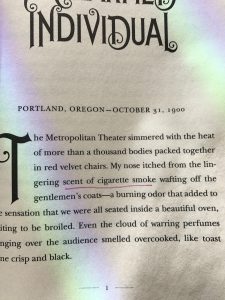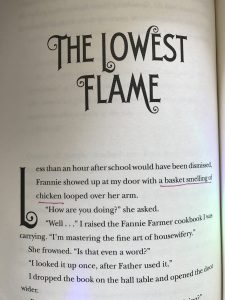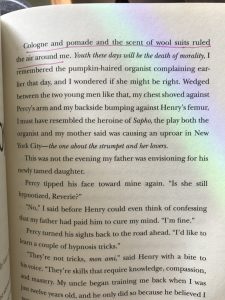I love how a book smells. I love that slightly dusty, dry papery smell mingled with the chemical odor of ink. Unfortunately that smell can often fade, but it’s in my memory.
Writers are encouraged to use smells in their books because when our brains read the description of the smells, our sensory areas light up just like we’re actually smelling the smells. Our brains can’t tell the difference between smelling with our noses, or reading about a smell that we know.
I do try to weave scents and smells into my stories, but only when they are appropriate. Recently I read a YA (young adult) book that I think was a tad heavy handed about incorporating smell data into the story.
Book Smells in A Cure for Dreaming
A Cure for Dreaming is a mix of humor and horror set in early 1900s Portland. A young girl is hypnotized in an attempt to remove her egalitarian views. There is some romance, parental tension, references to Dracula and a slight education on women’s equality and suffrage. I wanted to love the story, but I basically just enjoyed it.
What stuck out to me was that in every chapter, the author inserted an odor, scent or smell somewhat early. It was part of setting the scene but it also felt a little like checking a box. Maybe that’s not really a problem. I’m probably more picky than the average reader for this book. It really stood out to me as a task, not a story element.
Several smells appeared in the first sentences of the chapter.
Cigarette smoke and warring perfumes. How long until most readers are unfamiliar with cigarette smoke odor? Neither of these smells are very appealing.

“cigarette smoke…warring perfumes..smelled overcooked”
Food smells trigger not only our scent memories, but our appetites, too. Does your mouth water when you read this?

“smelling of chicken”
The smell of black coffee is unmistakeable and quite enjoyable in my smell collection.

“poached eggs, black coffee and a touch of rosemary”
In later chapters, the smells appear after a few pages. Here we have that tingling dental office smell that often triggers fear in people. Did you get tense reading this?
And the smell of peppermint makes me think of Christmas. This book is set at Halloween. Maybe she should have referenced cinnamon.
These three scents aren’t really familiar to modern day readers. The purpose here is to reference a society from a different time.
Reading How a Book Smells
So not only does the physical book smell, but the book has smells. As you read your next book, take note of the book smells that are mentioned and think about how they help set the scene, the time period, the mood. Or, just read the book.



